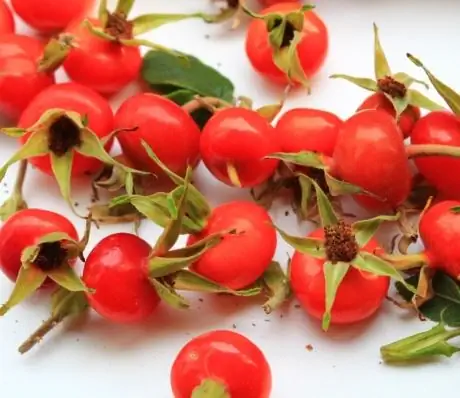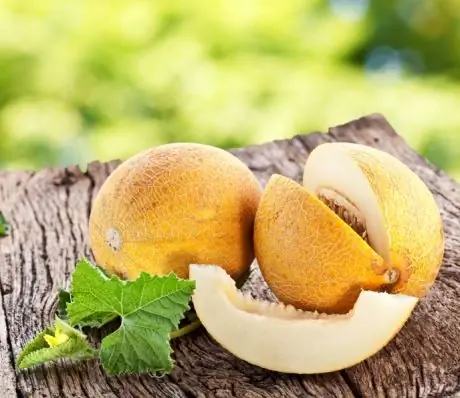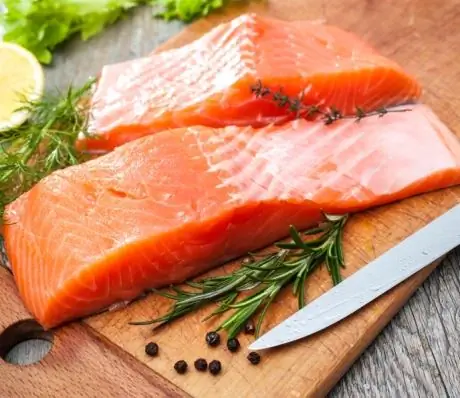- Author Rachel Wainwright [email protected].
- Public 2023-12-15 07:39.
- Last modified 2025-11-02 20:14.
Grushanka
Instructions for use:
- 1. Chemical composition
- 2. Useful properties
- 3. Indications for use
- 4. Contraindications
- 5. Home remedies

Grushanka is a medicinal plant that has an antiseptic, diuretic, anti-inflammatory, hemostatic effect.
Chemical composition
Grushanka (pear, pear, pear, periwinkle, tears, live grass, wild incense, field pepper, meadow lily of the valley) is a perennial herb, belongs to the genus of flowering plants of the Heather family.
For medicinal purposes, the round-leaved wintergreen is usually used.
The plant contains:
- iridoids (monotropein), phenols, tannins, triterpenoids (taraxerol), ericolin, chymafilin, naphthoquinone, as well as resins, trace elements, vitamins and essential oils (the ground part of the plant - leaves, stems and flowers);
- organic acids, steroids, quinones, glycosides (roots).
Beneficial features
In folk medicine, wintergreen is used as a diuretic, antiseptic, anti-inflammatory, hemostatic agent.
As a wound-healing and anti-inflammatory agent, decoctions are used externally - in the form of compresses and for washing purulent wounds. They are also used in the treatment of various skin diseases, scrofulous ulcers, gynecological problems and scurvy.
The plant is widely used in Tibet as an effective wound healing and antipyretic agent, as well as in inflammatory processes of the female genital organs, bone tuberculosis, and some liver diseases. In China, only the aerial parts of the wintergreen are used - flowers and leaves. Decoctions and infusions are used as an analgesic and hemostatic agent, as well as in the treatment of animal and insect bites. Locally and externally, the plant is used in the form of compresses, mouthwash and throat rinses, in the treatment of purulent blepharitis and skin diseases.
As a powerful stimulant of the gonads, wintergreen is used in folk medicine to treat female and male infertility associated with inflammatory processes. In modern gynecology, the plant is a part of medicines for the treatment of infertility, endometriosis, chronic adnexitis, obstruction of the tubes and some other diseases.
Essential oils prepared on the basis of young shoots and leaves of a wintergreen are highly valued in medicine and cosmetology. The essential oil has a diuretic, antirheumatic, antiseptic, analgesic, antispasmodic, anti-inflammatory, soothing, resorption, astringent, vasodilator, carminative, stimulating, antitussive effect. It also helps to increase lactation in women, helps to relax, soothes, improves mood, alertness and mental activity.
Indications for use
- swelling;
- dropsy;
- joint diseases;
- gout;
- disorders of the digestive system (chronic constipation, stomach ulcer and duodenal ulcer, dysbiosis; in order to improve appetite and digestion; as an astringent and anti-inflammatory agent);
- hernia;
- disorders of the genitourinary system (diseases of the prostate gland, impotence, infertility, obstruction of the fallopian tubes, cystitis);
- headaches, migraines;
- diseases of the larynx and throat;
- difficult to heal wounds, ulcers, fistulas, furunculosis;
- diabetes.
Contraindications
- varicose veins;
- hypotension;
- thrombophlebitis;
- increased blood clotting;
- individual intolerance to biologically active substances of the wintergreen.
Home remedies from wintergreen
- decoction: 2 teaspoons of herbs per 200 ml of boiling water; infusion time - 2 hours. Method of application: before meals 3 times a day, 1-2 tablespoons (possibly adding honey);
- tincture: 4 tablespoons of herbs for 0.5 liters of vodka; insist in a dark bowl in a cool dark place; infusion time - from 3 to 4 weeks (the tincture should be shaken daily). Method of application: 30-40 minutes before meals 3 times a day, 20-30 drops.
Information about the drug is generalized, provided for informational purposes only and does not replace the official instructions. Self-medication is hazardous to health!






